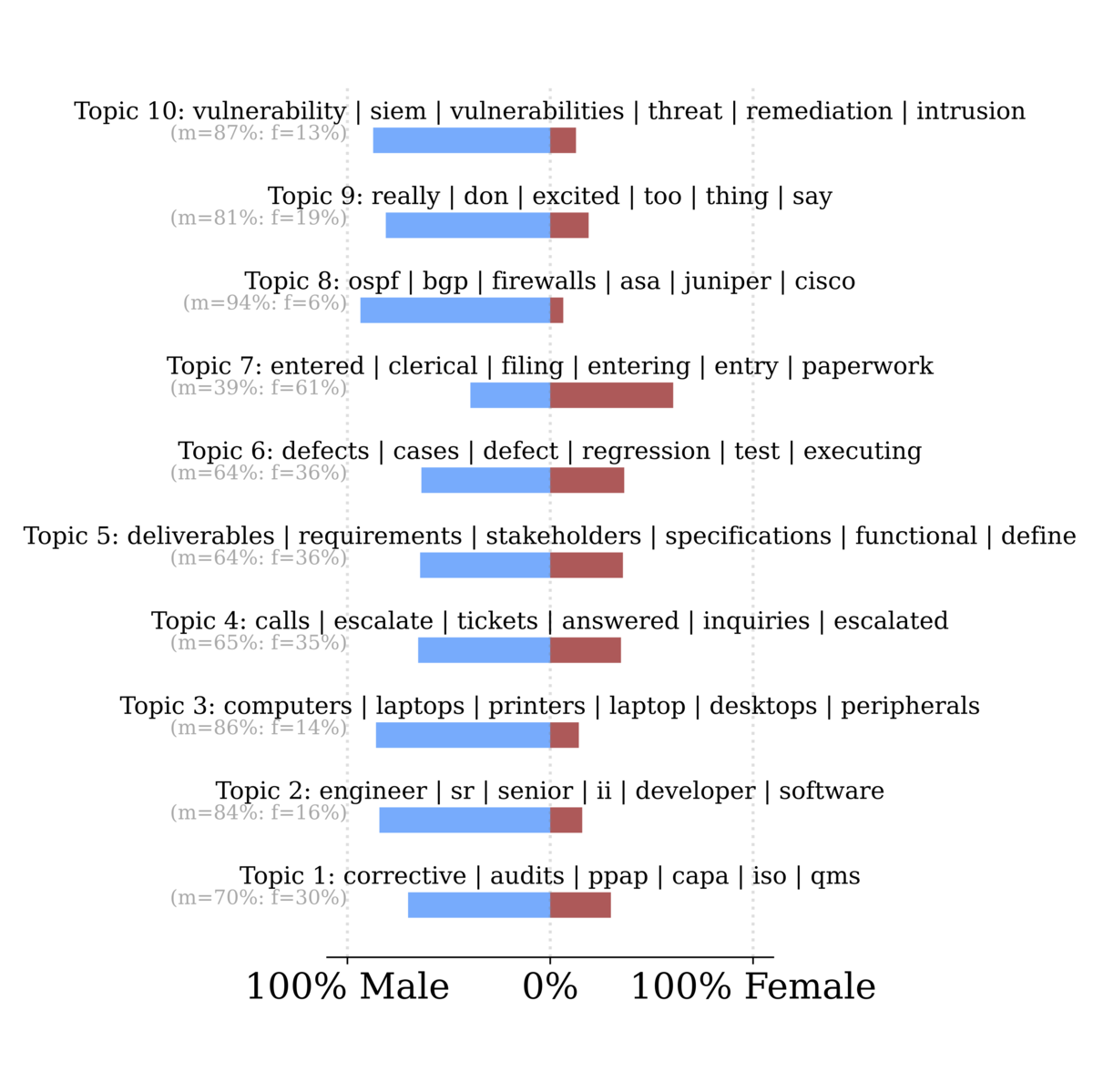The resume paradox: Greater language differences, smaller pay gaps
J. R. Minot, M. Maier, B. Demarest, N. Cheney, C. M. Danforth, P. S. Dodds, and M. R. Frank

Times cited: 0
Abstract:
Over the past decade, the gender pay gap has remained steady with women earning 84 cents for every dollar earned by men on average. Many studies explain this gap through demand-side bias in the labor market represented through employers' job postings. However, few studies analyze potential bias from the worker supply-side. Here, we analyze the language in millions of US workers' resumes to investigate how differences in workers' self-representation by gender compare to differences in earnings. Across US occupations, language differences between male and female resumes correspond to 11\% of the variation in gender pay gap. This suggests that females' resumes that are semantically similar to males' resumes may have greater wage parity. However, surprisingly, occupations with greater language differences between male and female resumes have lower gender pay gaps. A doubling of the language difference between female and male resumes results in an annual wage increase of \$2,797 for the average female worker. This result holds with controls for gender-biases of resume text and we find that per-word bias poorly describes the variance in wage gap. The results demonstrate that textual data and self-representation are valuable factors for improving worker representations and understanding employment inequities.
- This is the default HTML.
- You can replace it with your own.
- Include your own code without the HTML, Head, or Body tags.
BibTeX:
@misc{minot2023a,
author = {Minot, Joshua R. and Maier, Marc and Demarest, Bradford and Cheney, Nicholas and Danforth, Christopher M. and Dodds, Peter Sheridan and Frank, Morgan R.},
title = {The {R}esume {P}aradox: {G}reater language differences, smaller pay gaps},
year = {2023},
OPtpages = {},
note = {Available online at
\href{https://arxiv.org/abs/2307.08580}{https://arxiv.org/abs/2307.08580}},
}